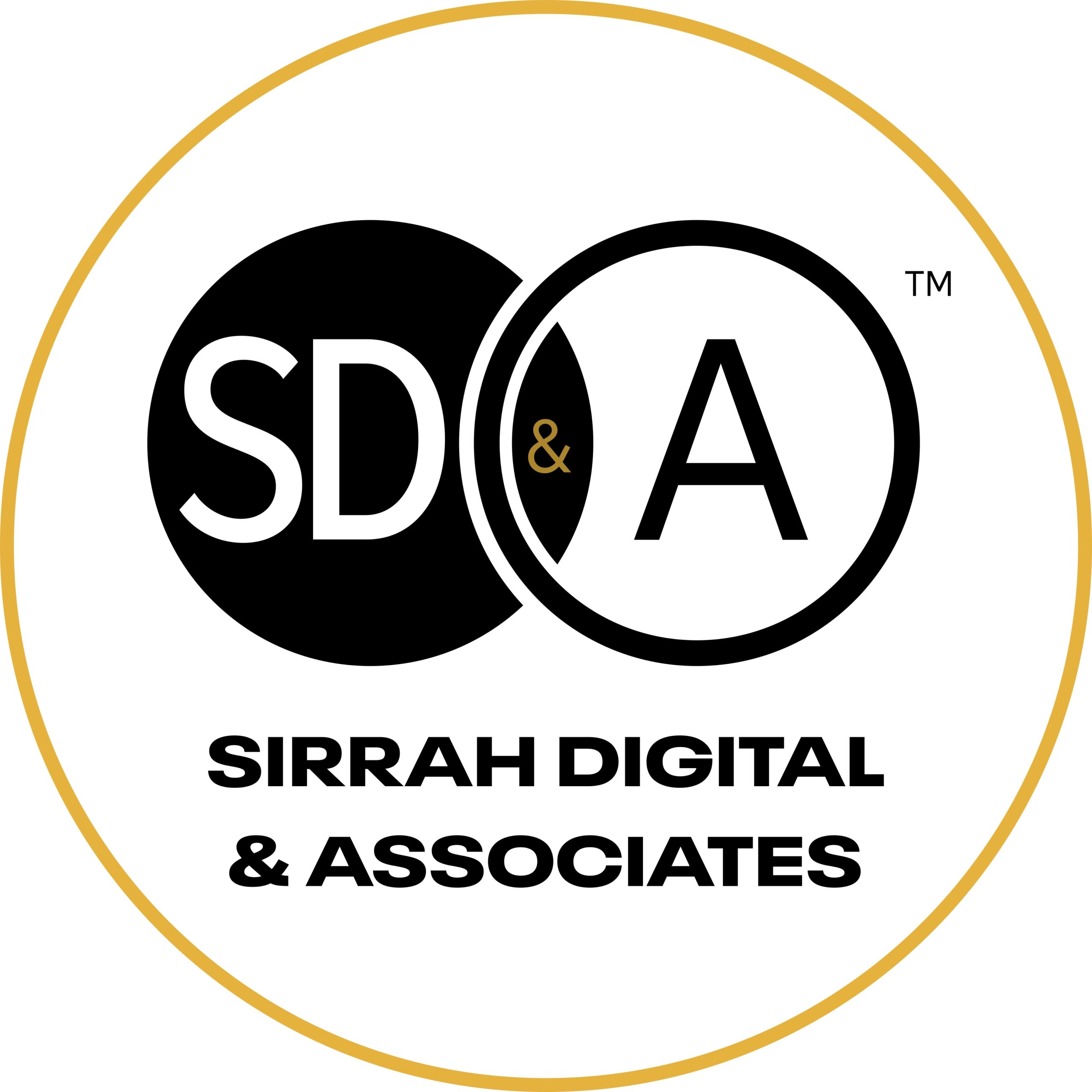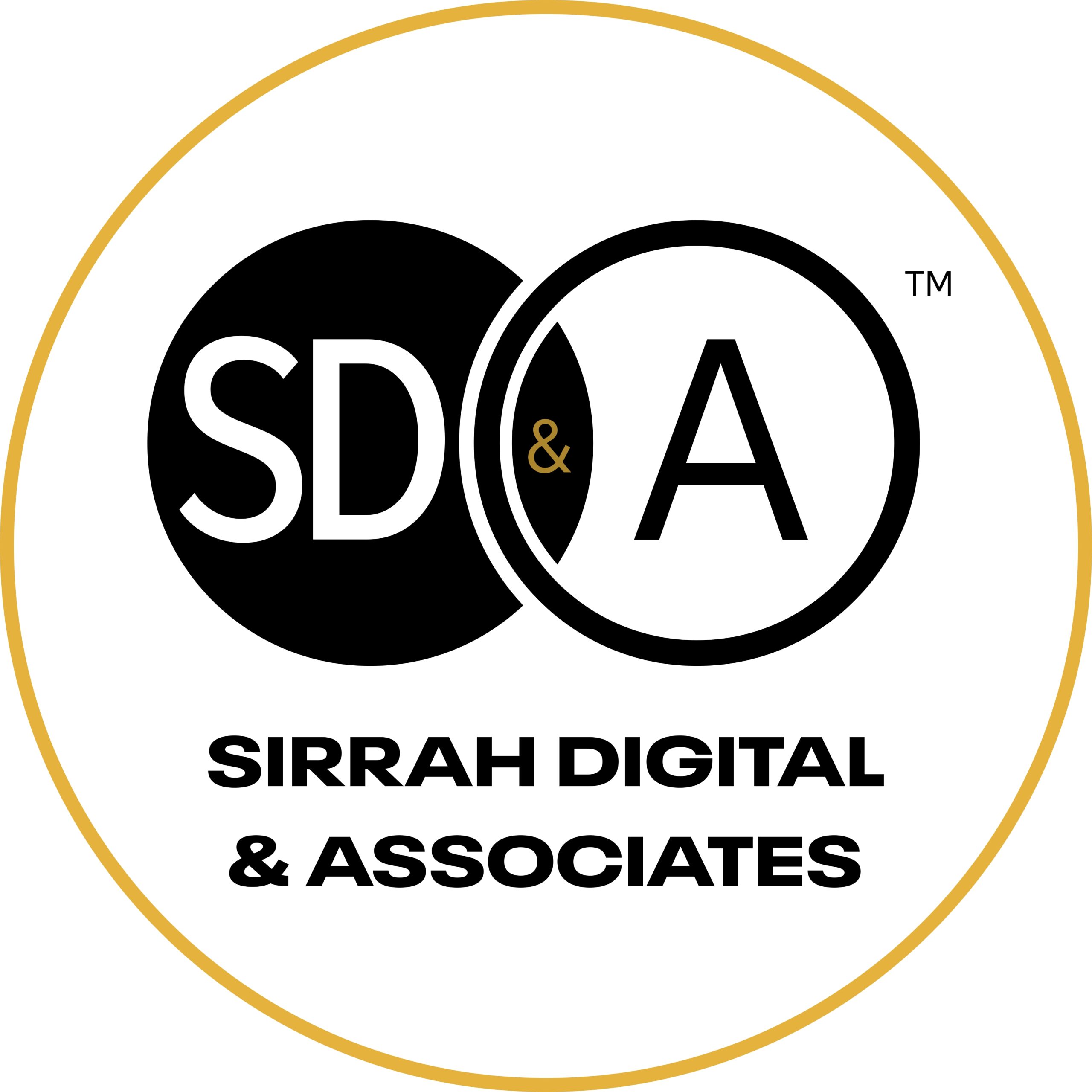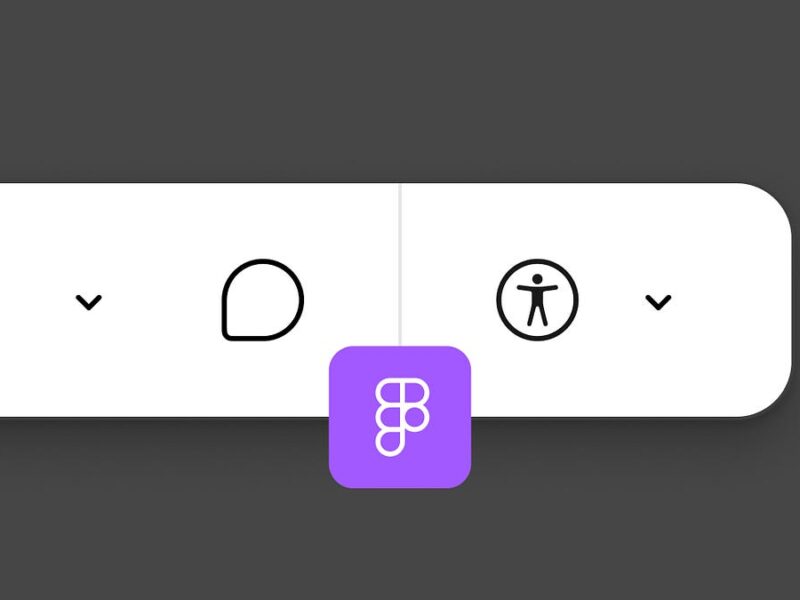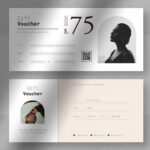[ad_1]
Visible design instruments can bias designers into much less accessible outcomes. So how can these instruments assist enhance these outcomes?
Early in my profession as a composer, a instructor as soon as gave me a useful piece of recommendation:
“it’s important to learn the way a digital instrument needs you to suppose, so as to free your self of its bias.”
This got here up in dialog after I had willingly given up my digital notation instrument for pen and paper — and the way that selection had reworked my artistic output.
I take into consideration this piece of recommendation usually as a designer. How the instruments we use put stress on us to ship a particular outcome. And the way a lot the “defaults” of a instrument can skew or slim our course of with out our consciousness.
Design instruments for instance have come a good distance within the final 40 years, from revolutionizing the best way we work, to enabling hundreds of thousands to change into extra artistic, to bettering the craft yr over yr. However in all that point they nonetheless primarily concentrate on visible artifacts. And whereas comprehensible, this focus can affect a designer’s output.
Within the early Nineteen Seventies, a sequence of landmark papers by Amos Tversky and Daniel Kahneman have been printed exploring Judgement beneath Uncertainty. And one factor they found was how data or data simply out there to an individual may bias their ideas and actions in direction of these issues — referred to as the availability heuristic.
Research associated to data and determination making have additionally proven that individuals with much less data and fewer cues usually tend to make poorer choices. And this raises an vital query about digital instruments:
Within the context of a design instrument like Figma, how a lot does the shortage of an choice affect a designer into producing a sure outcome?
Enter accessibility.
When constructing an accessible product, there are a major variety of particulars which can be inherently non-visual — issues trendy design instruments aren’t constructed to deal with:
- The title or semantics of one thing in context.
- Meta-information concerning the web page.
- Or, the numerous methods individuals can work together with a component.
When a design instrument doesn’t assist a consumer handle one in all these particulars, designers have to depend on their very own data or a assist system (like co-design actions) to make sure these particulars are coated. And this comes with a good bit of danger if that data is lacking. As Richard Larrick and Daniel Feiler observe in Experience in Determination Making:
“…area ignorance […] leaves the choice maker blind to vital interactions amongst elements which may be apparent to a person skilled in that area.”
And this helps the speculation that direct assist from a design instrument may enhance a contributor’s output. In reality, they even state this extra straight, saying:
“Distilling knowledgeable data into a call assist system can dramatically enhance consultants’ consistency.”
So, let’s speak about how we may do this.
Earlier than persevering with, I ought to make clear that I'm particularly speaking about instruments designed to assist construct digital merchandise, like Figma, Sketch, Penpot, and others.
There are various totally different ways in which accessibility might be impaired in a visible design instrument. And the next are a couple of main classes.
Probably the most sensible problem is that usually, non-visual data isn't supported by a instrument (or solely partially). This each provides problem to creating one thing accessible, and will power guesses if the proper data, data, or course of isn’t in place.
The nature of a visible communication instrument additionally encourages designers to focus in on this facet, and will blind them to particulars that fall exterior of this medium. And different kinds of affect can additional encourage this narrowing, like an absence of time.
Moreover, many instruments have made efforts to bridge the hole between design and engineering. However the code that’s produced usually lacks context or specificity, and consequently isn’t usable till it has been edited by a human; and that’s not all the time potential.
There are many tool-specific examples as properly. As a lot as I really like Figma’s Neighborhood, it has allowed Figma to dump what are ostensibly central challenges of a product’s expertise to customers to unravel. And this has the potential to seed {that a} matter isn’t really that vital, or shall be invisible to a designer due to the way it’s positioned. And I’m sure Figma is conscious of this as they’ve performed plenty of issues to shut a couple of gaps — like introducing Dev Mode, or committing to initiatives like their Useful resource Library or Shortcut.
After I started exploring this problem, there have been three questions on my thoughts with how design instruments may assist accessibility work:
- What determination assist methods do we have to present essentially the most assist?
- The place is the most impactful place within the consumer journey to supply these methods?
- How will we present the proper breadcrumbs to reveal and promote the usage of these methods?
However earlier than answering any of them, we have to speak about limitations.
There are particular sorts of accessibility challenges that design instruments are incapable of measuring. For instance, the extent of hysteria that an expertise would possibly place on somebody with ADHD. And consequently, this leaves extra deterministic challenges for us to contemplate. Issues like
- what one thing known as or the way it’s described,
- properties or knowledge about one thing,
- meta relationships,
- interactivity and behaviors, or
- different particulars that may simply be measured.
And these challenges straight relate to the primary query about determination assist methods.
A determination assist system is a cognitive assist that can be utilized assist enhance the consistency and final result of a course of. And a buying checklist is a good instance of 1.
Within the context of a design instrument, the underlying objectives for these methods are nonetheless the identical: they need to assist designers be reminded of, and construct consistency with an accessible final result; like ensuring that structural landmarks are recognized.
However what would possibly these methods seem like? And the place will we place them to have essentially the most affect? There are various totally different potentialities relying on which design instrument is being thought-about. So I’d prefer to simplify the rest of this matter by specializing in Figma particularly.
Writing can solely accomplish that a lot, so I constructed a prototype that you may expertise your self to get a greater sense of how these new methods would possibly work.
Props, knowledge, and non-visual data
We’ve already famous that quite a lot of details about a product is non-visual. And Figma partially helps this problem with Dev Mode and Annotations. Nonetheless, one main shortcoming with that is that the character of an Annotation reinforces the concept that “this data is not an intrinsic half of the product.”
Given this and different weaknesses that exist, a more practical method could be to construct a devoted tab within the properties panel (in design mode) that helps customers embody many alternative sorts of non-visual “knowledge.” And this method offers plenty of advantages:
- Data is very discoverable as a direct a part of the design expertise.
- Deterministic properties assist customers of their studying course of.
- A devoted tab offers higher readability with teams of associated data.
- It permits easier and extra strong interactions round managing this data.
Extra virtually, customers can leverage these new instruments to seize totally different sorts of vital data equivalent to making use of aspect semantics, giving a layer the right title, or including properties to assist describe the performance and conduct of one thing.
There’s a fair greater profit to this method too. By straight supporting actual properties Figma would give you the chance do much more, equivalent to
- articulate this data straight in code;
- present logic for when properties conflicted or included further results; and even
- assist automate sure sorts of determination making (assigning the button aspect to a part named “button”).
And testing this new method with designers confirmed that — even with the complexity of this extra knowledge — these adjustments each helped designers achieve success and had the potential to drastically enhance collaboration with builders.
Challenges with this method
As a lot I like this method, it does include a couple of large challenges nevertheless. Shifting the complete focus of Figma in order that “design mode” is extra holistic
- will increase the chance of this course of being left undone as data could possibly be pulled away from individuals with extra area experience (builders); it
- locations extra emphasis on the problem of “how do you higher combine builders into the design house?”; and
- has the potential to put plenty of stress on designers to “learn to code.”
And testing echoed a few of these considerations as properly. Particularly, how this method doesn't fully resolve the literacy drawback that exists, as many designers are unfamiliar with what a “combobox” is, or when it’s applicable to use a “landmark function.”
Simulating the human expertise
One other large space of accessibility work is attending to the other ways individuals really expertise a product. From their potential to seize stimuli, to processing data, to how they work together with a product. And quite a bit has been performed to handle these experiences with instruments for colour distinction, imaginative and prescient impairments, and different wants. However these instruments solely partially tackle this problem and all the time add some quantity of adverse friction to this sort of job.
So how may Figma higher assist designers right here?
Extending the modality of Figma to have the ability to assist these sorts of variations within the human expertise is one strategy to method this drawback. And a devoted mode for this has a couple of vital advantages.
First, it permits designers to discover many alternative experiences, equivalent to an individual who has a imaginative and prescient impairment like cataracts, or makes use of their fingers to work together with the product.
For instance, designers may simply simulate a colour deficiency like protanopia to see how an individual with red-green colorblindness would possibly expertise the product:
The opposite large profit is {that a} devoted mode permits a extra strong expertise round measurements. Instruments could possibly be configured to make use of particular guidelines, and these measurements may additionally facilitate extra studying alternatives with the factors they're utilizing. It could even be potential to measure particular conditions, like distinction beneath a particular kind of colorblindness:
Each designer I labored with was enthusiastic about this new “simulation mode” in testing, with sentiments starting from “actually helpful” to “merely phenomenal.” And this suggestions was actually encouraging.
Prototyping and higher interplay assist
There’s one final state of affairs I’d prefer to cowl. And it’s an attention-grabbing one as a result of on the floor the answer doesn’t seem like an accessibility-focused enchancment.
One of many greatest challenges in accessibility is designing an amazing interactive expertise for everybody; particularly for these utilizing a keyboard. Fortunately, Figma already has a partial answer to this problem with prototyping options. And this presents an amazing alternative to enhance two issues directly: creating extra accessible outcomes by serving to designers construct higher prototypes. There are some challenges to handle nevertheless.
The largest problem is with how Figma’s prototypes at the moment work. And some boundaries are that
- when keys are chosen as a set off, solely a single key might be assigned;
- solely a small variety of set off choices can be found; and
- the idea of focus doesn't exist.
As well as, limiting actions to a single set off provides pointless friction to constructing complicated behaviors. And addressing this workflow enchancment first would enhance the general expertise.
The primary adjustment lets a designer embody a number of keys for an motion, as there are lots of conditions the place a group of keys are equally legitimate triggers.
The largest change nevertheless is within the forms of triggers designers can select. And by altering them to match actual occasions, not solely are many extra sorts of prototyping behaviors out there however accessibility wants (for multi-modal experiences) will also be achieved.
The final change is a small, however impactful one. Prototypes in Figma at the moment assist keyboard use with display readers. And whereas useful, in follow this method creates some awkwardness because the idea of “focus” doesn’t actually exist. And that’s an important piece that’s lacking.
Fortunately, this will simply be remedied by giving designers the flexibility to mark particular layers as being “focusable” and letting actions cross focus to these layers. And this could enable prototypes to behave quite a bit extra like an actual product.
Earlier when speaking about non-visual data, I additionally included a piece for focus that I didn’t observe. And I did so as a result of not solely can it's an actual design property that may be affected by different properties, however it additionally helps set the inspiration for important navigational behaviors as properly.
All in all, these adjustments drastically enhance the sorts of prototypes and accessible behaviors that designers can create. However additionally they assist Figma to change into a a lot better supply of reality by capturing and speaking this data in a measurable approach. And that’s a giant alternative for Figma to then translate these behaviors into actual, accessible code for builders to construct from. And most of the designers I labored with echoed these sentiments.
Throughout this mission I labored with plenty of designers with totally different ranges of accessibility expertise to assist construct extra confidence on this speculation. And the suggestions they gave in testing the prototype I constructed was very constructive total: from the improved assist and capabilities designers would acquire, to the collaboration enhancements, and customarily how they have been in utilizing these instruments of their work. And I have to take a second to thank them for his or her time and suggestions on this mission because it was invaluable.
I strongly consider that an amazing accessibility expertise is barely achievable when it’s a pure a part of the design course of. And I hope that this exploration has helped to influence you that there’s actual worth in constructing a extra holistic and accessible product instrument.
And if “…distilling knowledgeable data into a call assist system can dramatically enhance consultants’ consistency” as Larrick and Feiler observe, then I’m hopeful concerning the affect these changes may have on accessibility work total.
[ad_2]
Source_link





